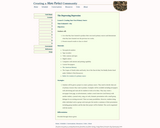
In this lesson, students use what they have learned in the unit to produce their own mock primary sources.
- Subject:
- Social Studies
- Material Type:
- Lesson Plan
- Provider:
- Roy Rosenzweig Center for History and New Media
- Date Added:
- 06/27/2017

In this lesson, students use what they have learned in the unit to produce their own mock primary sources.
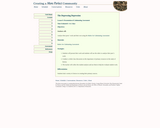
In this lesson, students demonstrate their learning throughout the unit through a presentation. Students will analyze peers' work using a rubric.
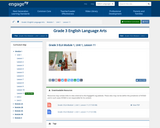
In this lesson, students describe characters in a story and describe how a character's actions contribute to the events in the story.
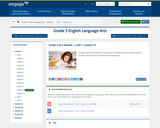
In this lesson, students answer questions using specific details from the text and determine the meaning of new vocabulary using clues in the text around a word.
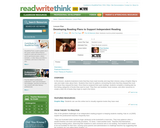
In this lesson, students brainstorm texts that they have read recently and map their choices using a Graphic Map to rate and make notes about them. Students then look for patterns connecting the texts that they enjoyed the most and those they enjoyed the least. Once they've analyzed their past readings, students complete a reading plan by first listing categories of books they want to read. They then use booklists, book reviews, and other resources to create a wish list of books they hope to read in the future.
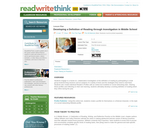
In this introductory lesson, students engage in a hands-on, collaborative investigation of the definition of reading by participating in small group brainstorming sessions and an analysis of a variety of texts and the strategies they need to read them. Students also create individual Reader’s Profiles with an online tool modeled on social networking sites. Sharing these profiles and reflecting on their own learning, students ultimately develop a working definition of reading which they refine during the year.

In this lesson, students will work in small groups to read and analyze a primary source using a set of questions designed to help them understand the writers' viewpoints. Students will then explain their findings to their classmates. Finally, each student will produce a written essay that explains how and why scientific understanding of the atom has changed over time.
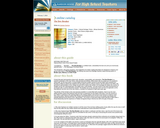
This Random House for High School Teachers reader's guide includes an introduction, questions, and suggestions for further reading designed to enhance discussion of Edwidge Danticat's novel, The Dew Breaker, a powerful exploration of the way history, both personal and political, affects those who are swept up in its sometimes violent path.

This inquiry leads students through an investigation of the Industrial Revolution in the United States by examining the manufacturing industry as a proxy for industrialization.

This inquiry leads students through an investigation of the experiences faced by immigrant groups who traveled to New York throughout the mid-nineteenth and early twentieth centuries.

In this lesson, students learn about the draft lottery during the Vietnam War, and how it affected the lives of young men during that time. Students are introduced to the Selective Service’s lottery system through a bell-ringer that asks them to locate their “number” and then segregates the class into the drafted and undrafted. They then read a short description of the Selective Service’s lottery system. The key points from the reading are summarized through a teacher-directed discussion. Finally, students view the oral histories of veterans who discuss the ways the draft impacted their perspectives on the Vietnam War.
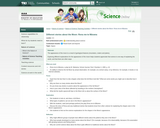
In this lesson, students explore the ways that stories are used to explain the shapes seen in the Moon's appearance and compare them with the scientific explanations for moon phases. Versions of the referenced story can be found online.
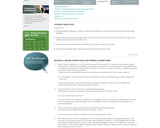
This lesson will allow students to demonstrate comprehension of a text by using a wide variety of strategies and by making personal connections to stories. Students will learn how to develop deeper understanding of character and theme, as well.
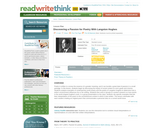
In this lesson, students will analyze examples of contemporary youth poetry and the poetry of Langston Hughes to determine how a writer's environment influences his or her writing. Students will then work in groups to conduct research on how events in the world shaped Hughes's work. In a group presentation to the class, students will cite specific examples that link their interpretation of the poem to the sociohistorical context in which it was written. The lesson culminates with each student creating an original poem that communicates a personal view on a current world issue.
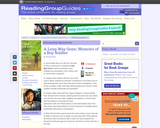
A group of discussion questions for Ishmael Beah's memoir, A Long Way Gone: Memoirs of a Boy Soldier
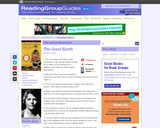
This resource contains a set of discussion questions for The Good Earth by Pearl S. Buck
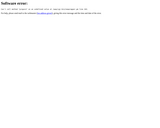
This resource contains a set of discussion questions for The Stranger by Albert Camus.

This lesson draws a connection between the threat of smallpox during the Revolutionary War and the influenza pandemic during World War I. In this lesson, students will utilize educational technology to consult primary, secondary, and tertiary sources in the completion of a webquest. Writing across the curriculum is a large focus of this lesson.
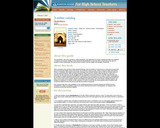
This Random House for High School Teachers reader's guide includes an introduction, discussion questions, author biography, and suggested reading list designed to enhance student reading of Jane Hamilton's Disobedience, a novel that offers a fresh look at the age-old problems of love and betrayal, the hard lessons of history, and the fragility and strength of family life.
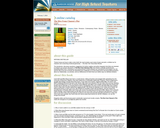
This Random House for High School Teachers reader's guide includes an introduction, discussion questions, and author biography designed to enhance student reading of The Dive from Clausen’s Pier, Ann Packer’s critically acclaimed and bestselling debut novel.